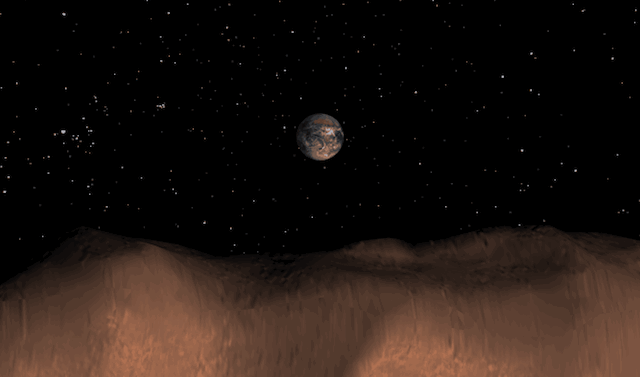The Week of Huge Things Flying Uncomfortably Close To Earth

With just over a week remaining before the Mayan Apocalypse, the situation around Planet Earth has been anything but calm. If you’ve been busy getting drunk at Christmas parties, you may be blissfully unaware of the huge flying mountains that have very nearly obliterated our world. But the asteroids are only half of the story: broken comets, secret meteor storms and a mysterious robot space shuttle are also haunting our skies this week.
- Asteroid 4179 Toutatis, described by astronomers as a “largish mountain,” zipped by Earth this morning, “harmlessly.” At its closest point, it was just 18 moon units away from destroying humanity and plunging the planet into years-long darkness. But don’t worry, it probably won’t strike us for another 600 years, if there’s an Earth left to strike.
- But on Tuesday morning, a previously unknown asteroid made an extremely close call — 140,000 miles, or less than two-thirds the distance between the Earth and the Moon. Nobody knew about this asteroid until it nearly collided with us. “Discovered only two days ago, XE54 came about as close to crashing into Earth as an asteroid can without actually doing so.”
- The Geminids, rocky leftovers from a comet that exploded, fill the nighttime sky with meteors this week, with the peak of 50 meteors per hour expected Thursday night. Until the invention of broadcast television kept people indoors at night, meteor storms were portents of doom.
- A surprise meteor storm will also peak Thursday night, with an expected 30 meteors per hour after sundown. These slower-moving fragments of the Comet Wirtanen will strike the planet as the comet’s debris collides with our atmosphere. There’s not even a name for this meteor storm, because it is happening for the first time. This is the thing about space: Not even the space scientists really know what’s going to slam into the planet next.
- And the secret robot space plane operated (maybe?) by the U.S. Air Force was just launched again on another completely secret mission. It goes up, it flies around for months and months, and it comes down. Maybe it is catching things up there, with its robotic arms.
Image by E. De Jong and S. Suzuki, JPL, NASA.
